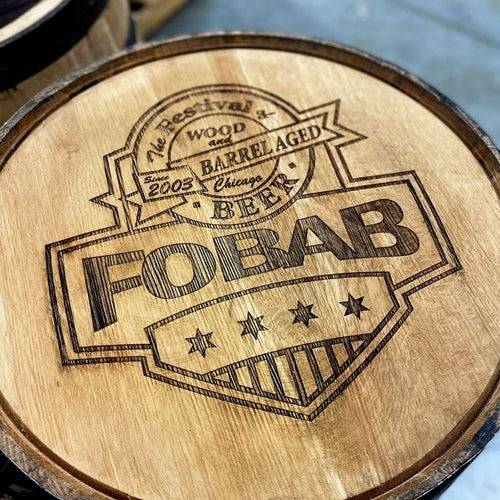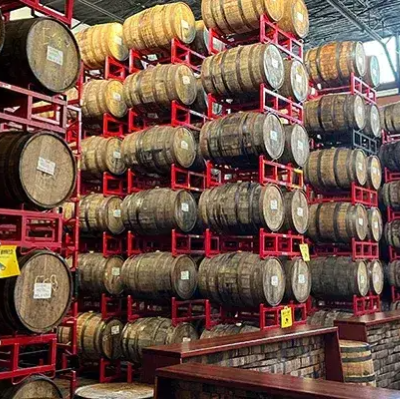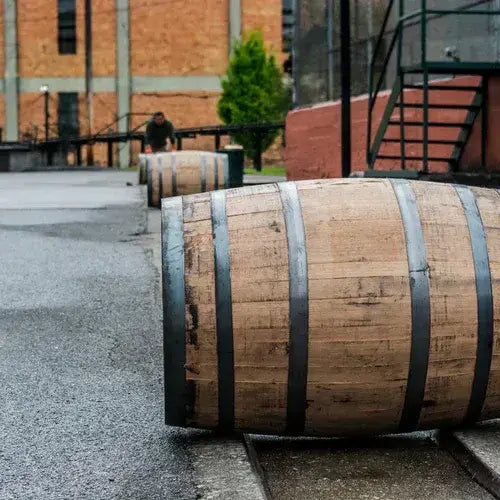How to swell a wine barrel
July 28th, 2021

Wine barrels can make for some pretty mean barrel-aged brews. But before we get ahead of ourselves and start talking about barrel-aging projects (there’ll be plenty of time for that!), we need to talk about another important wine barrel topic: swelling.
Why is swelling so important? Well, you don’t want your beer, cider, spirit or other beverage leaking out of the barrel and all over the floor, do you? Didn't think so. We don’t want that either!
That’s why we need to cover a few methods for swelling, a term for the process of using water or sometimes steam to help the barrel wood, specifically heads and staves, expand and seal up any leaks that might have formed over time.
WHY WINE BARRELS ARE MORE LIKELY TO NEED SWELLING
Unlike bourbon and whiskey barrels that are dumped by the distillery, which can have visible liquid remaining in them, wine barrels are more likely to have a dry appearance. Don’t worry! As the amazing aromas that come from the inside of these barrels suggest, there’s still plenty of liquid locked away in the staves to influence your barrel-aged beverage.
But being a little on the drier side does mean wine barrels are more likely than bourbon, whiskey and other types of spirit barrels to need swelling before you can begin barrel-aging with them.
Let’s dive into how to swell a wine barrel.
HOW TO SWELL YOUR WINE BARREL
There are quite a few ways to go about swelling a barrel. For wine barrels, we recommend three basic swelling methods.
OPTION 1: HEAD SWELLING
- Stand the barrel vertically on one head.
- Using hot water (+180° F), fill the top head to the top of the first ring – usually around 2 inches of water.
- Let the water sit overnight.
- The next morning, add more water to the same head and watch for any bubbles coming from the head. If no bubbles are seen, flip the barrel over and repeat the previous steps on the opposite head.
- If you see bubbles, allow the water to sit on the head for several more hours to continue swelling the wood.
- This method is great for swelling the joint between the heads and the staves, which is the most common area for leaks.
OPTION 2: SWELLING THE INSIDE
- Lay the barrel horizontally onto a common barrel rack with the bunghole facing up.
- Fill the barrel 1/3 of the way with hot water (+180° F) and let it sit for two hours.
- Periodically roll the barrel back and forth to coat all of the inside surfaces of the barrel with water.
- Add another 1/3 of water to the barrel and check for leaks. If water is still leaking from the barrel, allow it to sit with water inside for another 1-2 hours. At this point, the barrel should be swelled up.
- Drain the barrel completely and fill with your beverage.
- It is extremely important to fill your barrels as soon as possible with your beverage if using this method. Once introduced, the risk of contamination increases the longer the water is in the barrel.
OPTION 3: STEAM METHOD
- Lay the barrel horizontally on a standard barrel rack with the bunghole facing up.
- Using a steam generator, fill the barrel with steam at a temperature of at least 212° F.
- Continue to pump steam into the barrel for at least 10 minutes. This may take longer depending on how dry the barrel is.
- Once the bands seem to tighten up, remove the steam and allow the barrel to cool.
- Drain any water that has accumulated.
- Fill the barrel 1/3 of the way with cold water to check for leaks. If any seeping is noticed, keep the water in the barrels until it subsides.
FILL YOUR BARREL RIGHT AWAY
Many of our customers often ask how soon they should fill their barrels with beer, wine, whiskey or other spirits after they receive them. We always recommend filling your barrel with beer or other beverages as soon as possible once they’ve been delivered.
This is true for wine barrels, although you may have to use one of the above swelling methods first. After you’ve swelled the barrel and confirmed it’s leak-free, it’s time to get filling! That’s the best way to make sure your barrel-aged beverage benefits from all the wine flavors locked tight within the barrel’s staves.
MIDWEST BARREL CO. WINE BARRELS ARE LEAK-FREE AND CLEAN
We stand by our promise to sell Damn. Good. Barrels. That means all liquid grade barrels from Midwest Barrel Co. are backed by our promise of being leak-free for 30 days. If you’ve taken the necessary steps to swell your wine barrel before filling it, then we guarantee it won’t leak.
How can we make that guarantee? Because our team knows barrels. We visually inspect and, if necessary, pressure check barrels that come through our warehouse before sending on their way to the next step of their journeys.
And that’s just one part of what makes a barrel a Damn. Good. Barrel. For wine barrels, that also means they’re clean. When you buy a neutral red and white wine barrel from us, you’re buying a barrel that has been washed, steamed, ozoned, gassed and guaranteed to be VA and Brettanomyces (Brett) free. We let you decide when and how to experiment with that funky stuff!
Let us know how your barrel-aged beer or other beverage turns out
We want to hear from you! If you have questions about swelling wine or other barrels, or want to share your barrel-aged brews and beverages with us, then send us an email.

ABOUT THE AUTHOR:






